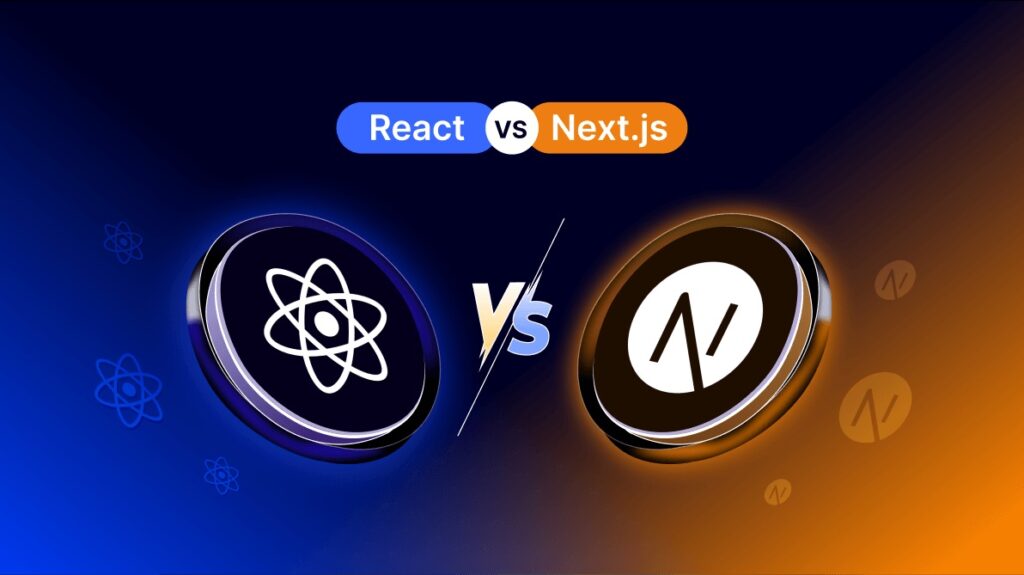In today’s fast-moving digital ecosystem, web development feels a lot like building cities. Some developers prefer the flexibility of designing from scratch—placing every brick, drawing every road. Others choose a master plan that comes pre-equipped with the roads, plumbing, and zoning rules. React represents the raw materials—the freedom to create anything—while Next.js is the master plan, offering a structure to streamline development.
Choosing between them is less about right or wrong—it’s about understanding what kind of city you’re trying to build.
Understanding the Two Builders
React is like a box of premium LEGO blocks. It gives developers immense flexibility to design components and assemble interactive interfaces piece by piece. However, React alone doesn’t tell you how to structure the entire application—it focuses solely on the “view” layer. Developers must decide on routing, data fetching, and server-side logic themselves.
Next.js, on the other hand, builds on React’s foundation but adds architectural intelligence. It provides ready-made tools for routing, server-side rendering (SSR), static site generation (SSG), and API handling. Think of it as a well-organised construction site where plumbing, electricity, and layouts are pre-installed—you just bring the creativity.
Many learners exploring full stack Java developer training often find this distinction crucial. Understanding when to start from scratch and when to leverage frameworks that simplify the workflow determines the success of their web projects.
The Power of Structure in Next.js
Next.js isn’t just about speed—it’s about smart architecture. By handling both client-side and server-side rendering, it ensures that websites load faster and are optimised for search engines. This built-in efficiency reduces the burden on developers to configure complex tooling manually.
For instance, when you open an e-commerce site built with Next.js, it pre-renders key pages for better performance and user experience. It’s like having a city planner who anticipates traffic jams before they happen and builds wider roads in advance.
Next.js also supports incremental static regeneration (ISR), a feature that updates only specific pages when content changes instead of rebuilding the entire site. This ensures lightning-fast updates without downtime—perfect for content-heavy platforms like blogs, portfolios, and online stores.
React: Flexibility for Creators
While Next.js gives structure, React gives freedom. Developers who enjoy full creative control gravitate toward React’s unopinionated nature. It allows integration with any back-end, any database, and any deployment method.
React encourages developers to think in reusable components—tiny, independent building blocks that can be arranged in infinite ways. This modular approach has made React a favourite for applications that need dynamic interactivity and customisation.
However, freedom comes with responsibility. Without guidelines, projects can quickly become difficult to maintain. Developers must decide how to manage data flow, routing, and rendering strategies—tasks that Next.js automates by design.
When to Choose Which
The choice between React and Next.js depends largely on your project’s goals and scale. If you’re building a small web app focused on interaction, React might be all you need. But if performance, SEO, or scalability matter, Next.js takes the lead.
For instance, startups that prioritise quick time-to-market often lean toward Next.js because it reduces setup complexity. In contrast, teams working on internal dashboards or single-page applications (SPAs) prefer React for its freedom and lighter footprint.
Learners in full stack Java developer training are often encouraged to experiment with both frameworks. Mastering React teaches the fundamentals of component-based architecture, while Next.js introduces real-world production-level patterns essential for scalable web apps.
The Developer Experience
From a developer’s perspective, both React and Next.js are designed to enhance productivity—but in different ways. React is ideal for experimentation, teaching developers how front-end elements interact dynamically. Next.js focuses on providing a smoother development journey with fewer setup hurdles and built-in optimisation features.
One could think of React as the open ocean—vast and full of exploration possibilities—while Next.js is a well-marked channel that ensures you reach your destination faster, safely, and efficiently.
Conclusion
React and Next.js share DNA, yet their philosophies differ. React offers pure flexibility, while Next.js transforms that flexibility into a guided path toward efficiency. Together, they form the backbone of modern front-end development—balancing creativity with order.
For aspiring developers, understanding this relationship is key to mastering the modern web. Whether one starts with the raw power of React or the structured excellence of Next.js, both paths lead to creating high-performing, user-focused applications that define the digital experiences of tomorrow.

